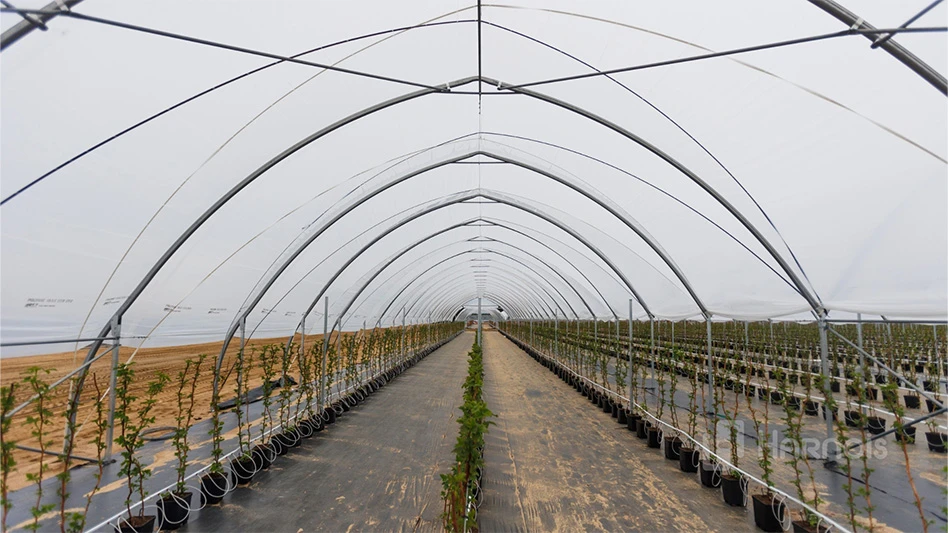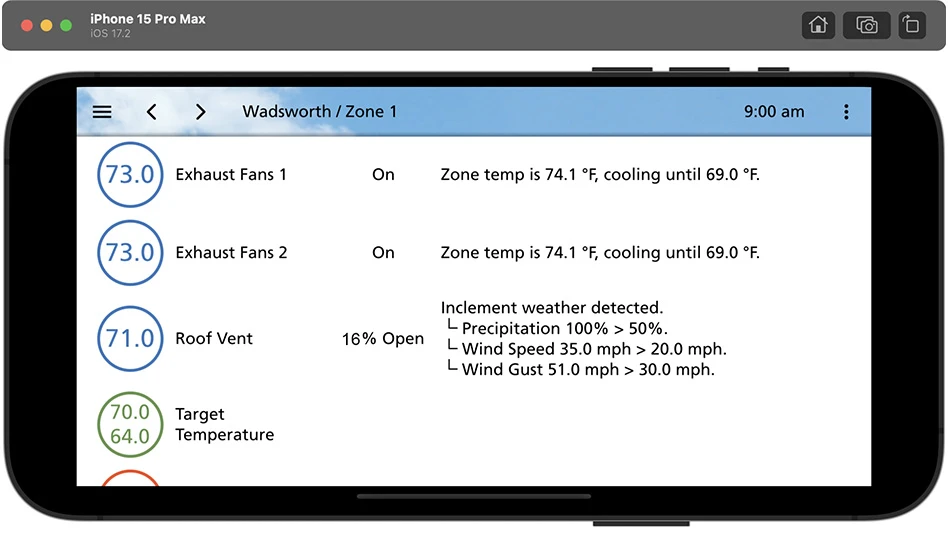 Rosy maidenhair fern has gained a solid reputation as a houseplant. But more gardeners are discovering its winter hardiness and the sparks of color this plant lends to landscapes.
Rosy maidenhair fern has gained a solid reputation as a houseplant. But more gardeners are discovering its winter hardiness and the sparks of color this plant lends to landscapes.
According to Casa Flora, a liner producer headquartered in
Like most ferns, rosy maidenhair thrives in part sun to shade. Its ability to brighten up dark areas sets it apart. New fronds emerge rosy-red, adding interest to woodland gardens. Color changes to green or green-bronze as the plant matures.
The branched, fan-shaped leaf segments have a slightly rough texture that also adds interest. The genus name comes from the Greek word adiantos, which means “unwetted” and refers to how maidenhair fern fronds repel water.
The plant has a clumping habit and reaches 18-24 inches tall. It makes an excellent groundcover, spreading easily on creeping stems. It’s also used as a specimen plant or edging. Rosy maidenhair fern likes plenty of moisture and above-average humidity. As a houseplant, it’s sometimes known as a “Lazarus” plant, due to its ability to spring back to life after it has dried out. In the landscape, however, rosy maidenhair fern won’t tolerate dry soil.
Cultural tips
Ferns, including rosy maidenhair, are very susceptible to fertilizer burn, according to Jose Aguirre, head grower at Casa Flora. He warns growers not to feed plants when they’re going dormant or already dormant. Aguirre recommends 50-100 parts per million nitrogen on a balanced liquid feed program or a low rate of slow-release fertilizer, such as Osmocote 15-9-12.
For growing media, Casa Flora recommends using a perennial bark mix or well-drained peat-based mix. Soil should be allowed to dry moderately between watering. In hot conditions, more frequent watering may be necessary to prevent desiccation.
About 1,200 to 2,000 footcandles of light is required during active growth periods. Some shade may be required in Southern climates. For the first four to six weeks, soil temperature of no lower than 65°F is best (68°F to 75°F is ideal). A pH of 5.5 to 6.5 is acceptable for rosy maidenhair. Quarts will usually finish in 10 weeks. For gallons, average finish time is 18-20 weeks.
Disease and pests are generally not a problem with rosy maidenhair and other perennial ferns, provided the grower correctly spaces plants and allows them to dry slightly between watering. Fungus problems tend to occur when foliage is overgrown, constantly wet and subjected to low night temperatures. Treatment with Medallion or other approved fungicides will help to correct problems.
Aphids or caterpillars can be a problem, Aguirre said. Casa Flora recommends Orthene or other approved insecticides at half label rates to deal with this problem. Oil-based products should not be used on ferns.
For more: Casa Flora, (800) 233-3376; www.casaflora.com.
Specifics
Name: Adiantum hispidulum
Common name: Rosy maidenhair fern.
Family: Adiantaceae.
Description: Fine-textured fern gaining recognition for its hardiness. New fronds emerge rosy-red that changes to green as the plant matures.
Propagation: Division or spores.
Hardiness: USDA Hardiness Zones 7-10.
{sidebar id=2}
Uses: Suitable for shady areas. Can be used as a specimen plant, groundcover or edging.
-
Latest from Greenhouse Management
- Star Roses and Plants introduces Martha Stewart Rose
- Hoffman Nursery announces David Hoffman as CEO, Craig Reynolds as COO
- Plantpeddler releases Poinsettia Variety Day 2024 results
- Sarisa insecticide now registered for drench applications and many common greenhouse vegetable crops
- Ball FloraPlant launches redesigned website
- Costa Farms wins Top 10 Marketing Team at 2024 OnCon Icon Awards
- Thank you(!)
- Construction begins at Dramm’s Fish Fertilizer Facility in Wisconsin





